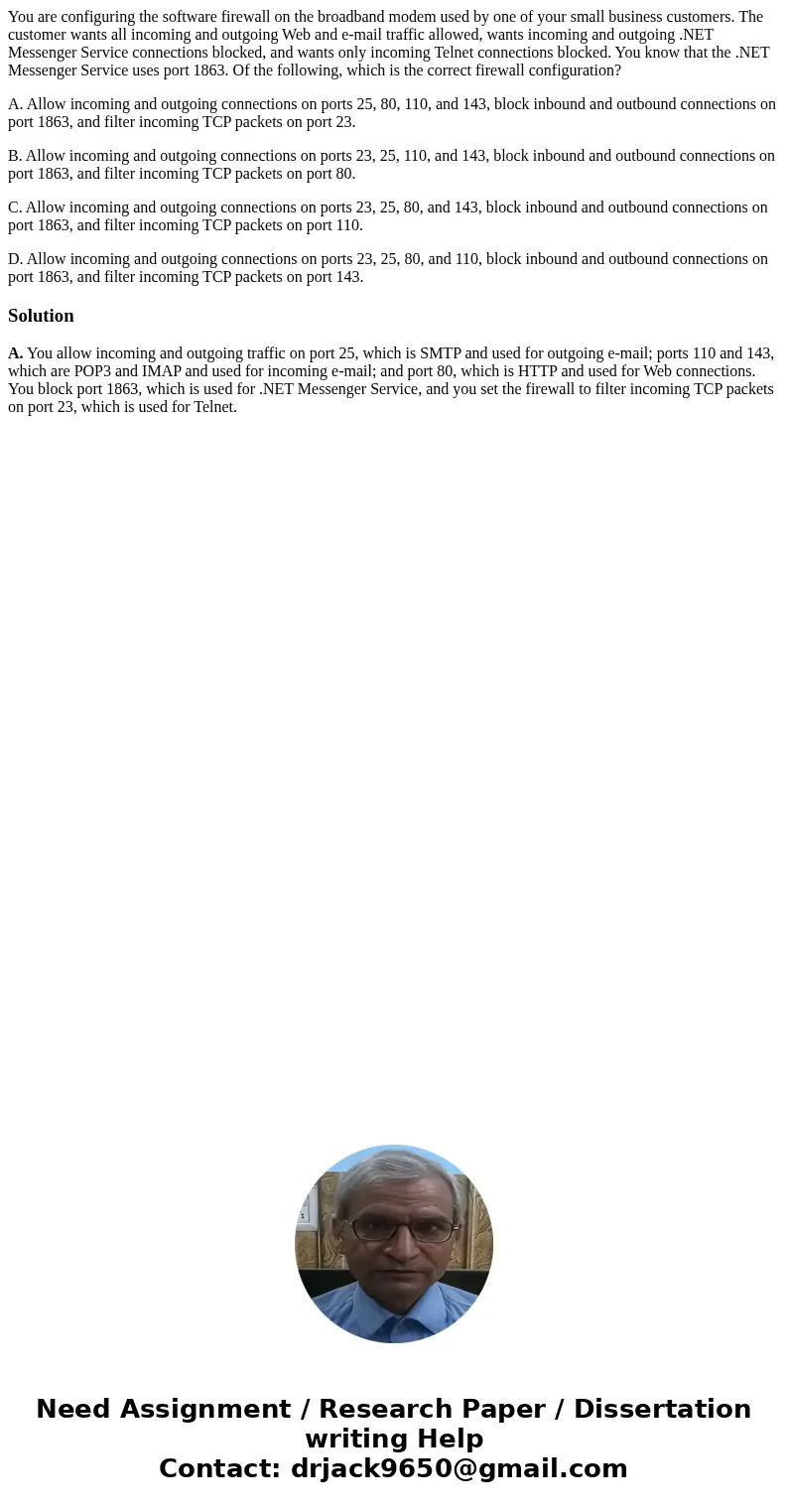You are configuring the software firewall on the broadband m
You are configuring the software firewall on the broadband modem used by one of your small business customers. The customer wants all incoming and outgoing Web and e-mail traffic allowed, wants incoming and outgoing .NET Messenger Service connections blocked, and wants only incoming Telnet connections blocked. You know that the .NET Messenger Service uses port 1863. Of the following, which is the correct firewall configuration?
A. Allow incoming and outgoing connections on ports 25, 80, 110, and 143, block inbound and outbound connections on port 1863, and filter incoming TCP packets on port 23.
B. Allow incoming and outgoing connections on ports 23, 25, 110, and 143, block inbound and outbound connections on port 1863, and filter incoming TCP packets on port 80.
C. Allow incoming and outgoing connections on ports 23, 25, 80, and 143, block inbound and outbound connections on port 1863, and filter incoming TCP packets on port 110.
D. Allow incoming and outgoing connections on ports 23, 25, 80, and 110, block inbound and outbound connections on port 1863, and filter incoming TCP packets on port 143.
Solution
A. You allow incoming and outgoing traffic on port 25, which is SMTP and used for outgoing e-mail; ports 110 and 143, which are POP3 and IMAP and used for incoming e-mail; and port 80, which is HTTP and used for Web connections. You block port 1863, which is used for .NET Messenger Service, and you set the firewall to filter incoming TCP packets on port 23, which is used for Telnet.

 Homework Sourse
Homework Sourse